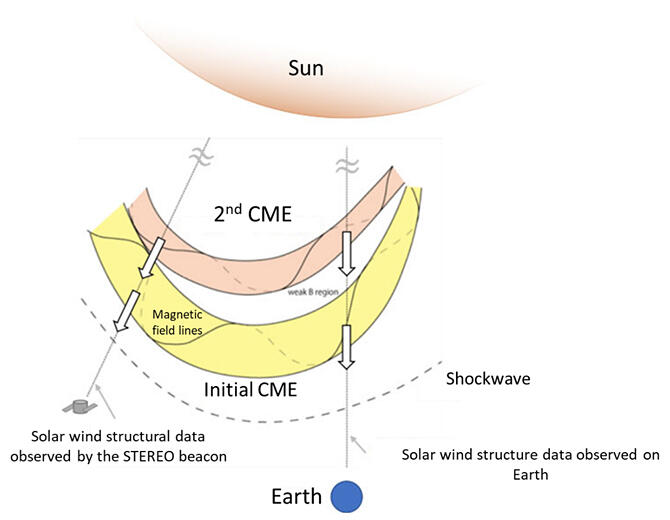Associate Professor Ryuho Kataoka of the National Institute of Polar Research, through collaborative research with Senior Researchers Daikou Shiota, Hidekatsu Jin, Chihiro Tao, and Hiroyuki Shinagawa of the National Institute of Information and Communications Technology (NICT), Professor Hitoshi Fujiwara of Seikei University, and Associate Professor Yasunobu Miyoshi of Kyushu University, has analyzed the mechanism that generated a magnetic storm in early February 2022 and simulated the increase in atmospheric density it created. This analysis enabled the group to clarify the cause of the re-entry and loss of dozens of low earth orbit satellites launched by SpaceX in early February of the same year. The group's results were published on December 23 in the Journal of Space Weather and Space Climate.

Provided by NIPR
U.S.-based SpaceX lost multiple satellites in early February 2022 after a magnetic storm. Of the 49 Starlink satellites it launched on February 3 of that year, the majority were lost due to re-entering the atmosphere. Large 'explosions' on the sun cause massive amounts of plasma to be generated and ejected (coronal mass ejection). When this plasma reaches the Earth, it causes its geomagnetic fields to weaken worldwide for several days. This phenomenon is called a magnetic storm.
According to SpaceX, atmospheric drag (drag imparted on satellites from the surrounding atmosphere) increased by about 50% after the launch. As a result, the company shifted the satellites into a safety mode to reduce atmospheric drag at their low altitude of about 210 kilometers. Despite this move, up to 40 satellites eventually became unrecoverable and were lost without being able to climb to the target altitude of 350 kilometers.
This magnetic storm was typical and of a magnitude that generally occurs once a month or so. However, it attracted attention because of the large number of satellites it caused to re-enter the atmosphere. The atmosphere at around the 200 km mark, where the satellites were deployed, is not commonly observed, and the impacts of magnetic storms are not well understood. Prior studies have found only a 25% increase or decrease in atmospheric density in the polar regions after these storms.
Associate Professor Kataoka and the research group analyzed the mechanisms that generate these storms. Their analysis of solar wind observation data indicated the possibility that two solar coronal mass ejections hit the Earth simultaneously, leading to the generation of an irregular and unpredictable magnetic storm.
The group believes that it is rare for magnetic storms to occur twice in a row and that a second one would be difficult to predict. From their analysis they revealed that two coronal mass ejections did indeed take place from the sun, causing two magnetic storms.
Furthermore, a real-time simulation (GAIA) of the physical processes of the atmosphere showed an increase in atmospheric drag over a broader range than was previously understood at an altitude of 200 km. This finding indicates that even weak magnetic storms can affect satellites operating in low earth orbit. While empirical models from previous studies showed an increase in atmospheric density of about 25%, the simulated model of the atmosphere showed a 50% increase in global density as the atmosphere heated and expanded due to the magnetic storm spreading from the poles to lower latitudes. The group also found this could be predicted in real-time.
The results suggest that to predict increases in atmospheric drag on low earth orbit satellites due to magnetic storms in advance, improvements in the accuracy of predicting magnetic storms are required through an increased understanding of the structure of solar winds, and that advanced earth atmosphere models that reproduce atmospheric drag with high accuracy need to be developed and applied.
Journal Information
Publication: Journal of Space Weather and Space Climate
Title: Unexpected space weather causing the reentry of 38 Starlink satellites in February 2022
DOI: 10.1051/swsc/2022034
This article has been translated by JST with permission from The Science News Ltd. (https://sci-news.co.jp/). Unauthorized reproduction of the article and photographs is prohibited.




